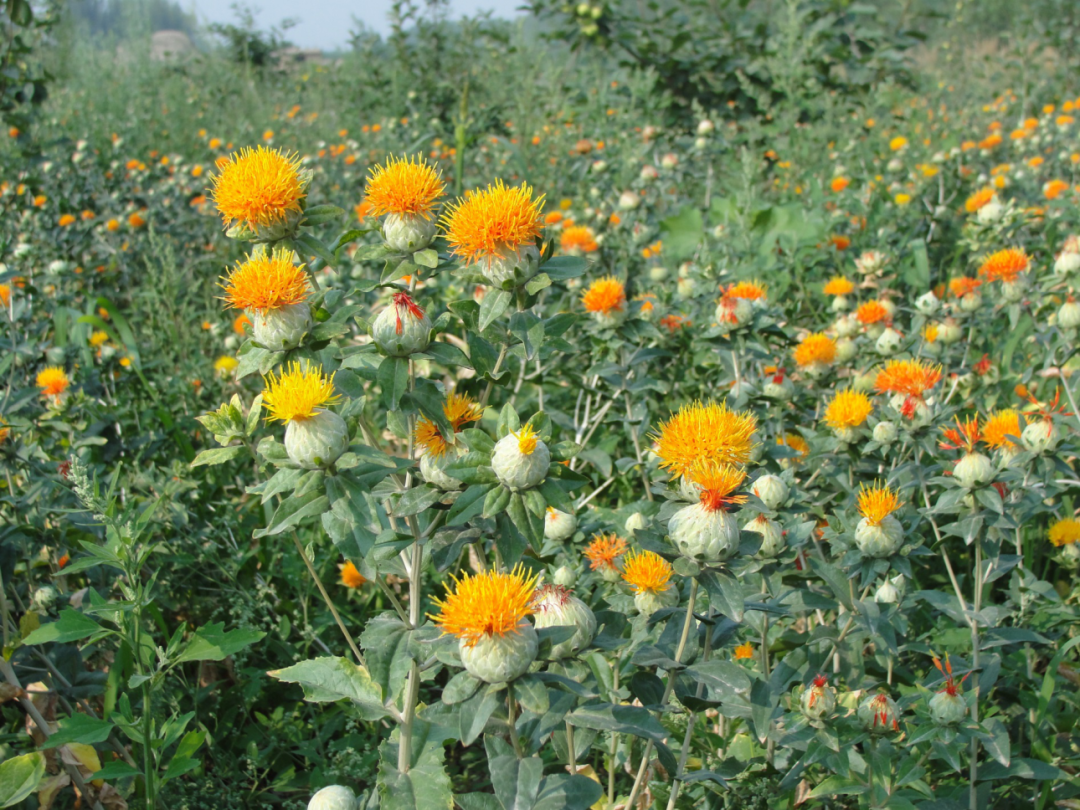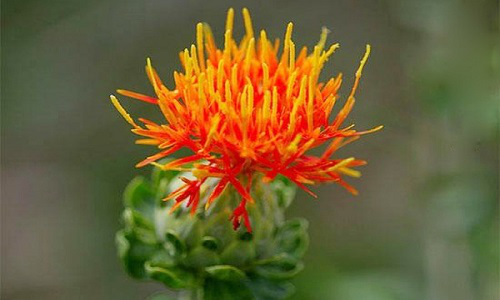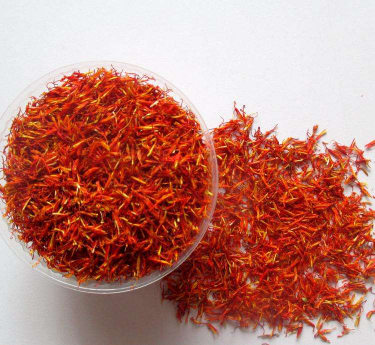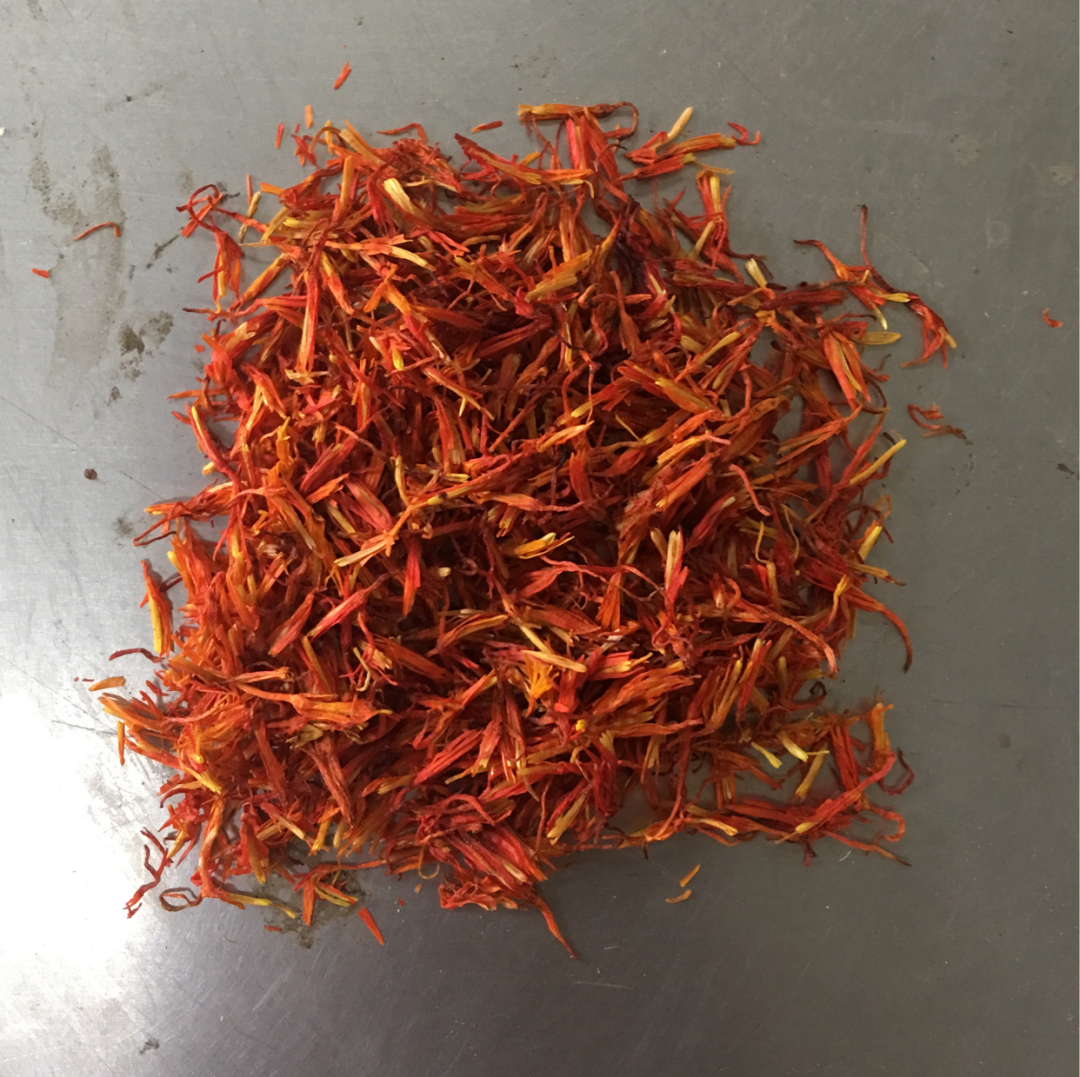Source: Zhangjiagang Traditional Chinese Medicine Hospital
In daily life, we often come across many traditional Chinese medicinal materials. Can you recognize them all? Jiangsu Provincial Administration of Traditional Chinese Medicine has specially created the “Traditional Chinese Medicine Encyclopedia” series to help everyone understand the herbal medicines in daily life. Stay tuned! ▼▼▼

Source
This product is the dried flower of the Asteraceae plant, Hong Hua (Carthamus tinctorius L.).
Alias
Red Flower (first recorded in the Song Dynasty’s “Kaibao Bencao”), Huang Lan (Su Song stated: its flowers are red, and the leaves resemble blue, hence the name blue, also known as Huang Lan), and Thorny Red Flower.
Origin
China has a long history of cultivating Hong Hua, with Xinjiang, Henan, Zhejiang, and Sichuan being the main production areas. Other provinces also have distributions.

Identification of Characteristics
It is a flower without ovaries, approximately 1-2 cm long, with a surface that is reddish-yellow or red. The corolla tube is elongated, with 5 lobes at the tip, and the lobes are narrow and 5-8 mm long. There are 5 stamens, and the anthers are yellowish-white, forming a tubular structure; the stigma slightly protrudes from the anther tube, cylindrical, and slightly bifurcated at the top. The texture is soft, with a slight fragrance and a slightly bitter taste. When the flowers are soaked in water, the water turns golden yellow. The best quality has bright red corolla, no thorns, soft texture, and feels fluffy when held.
Additionally, it is important to note: Hong Hua and Xihua (Crocus sativus) are two different medicinal herbs, with different sources and clinical uses, and should be distinguished.

Properties and Channels
Bitter in taste, slightly cold. Non-toxic, enters the Heart (Xin), Pericardium (Xin Bao), and Liver (Gan) meridians.
Functions
Invigorates blood circulation, regulates menstruation, dispels blood stasis, and alleviates pain.
Main Indications
(1) Blood stasis causing amenorrhea, dysmenorrhea, and postpartum abdominal pain: Hong Hua is warm and dispersing, a key herb for invigorating blood, dispelling stasis, and alleviating pain, commonly used in gynecology for blood stasis syndromes, often combined with Dang Gui (Angelica sinensis), Chuan Xiong (Ligusticum chuanxiong), and Tao Ren (Peach Kernel). It is effective for dysmenorrhea when used alone; it can also be combined with Chi Shao (Red Peony), Yan Hu Suo (Corydalis yanhusuo), and Xiang Fu (Cyperus rotundus) to regulate Qi and invigorate blood to alleviate pain. For amenorrhea, it can be combined with Dang Gui, Chi Shao, and Tao Ren, such as in the Tao Hong Si Wu Tang. For postpartum abdominal pain due to blood stasis, it can be combined with He Ye (Lotus Leaf), Pu Huang (Typhae Pollen), and Mu Dan Pi (Moutan Cortex), such as in Hong Hua San.
(2) Abdominal masses and accumulations: Often combined with San Leng (Sparganium stoloniferum), E Zhu (Curcuma zedoaria), and Xiang Fu.
(3) Chest obstruction and heart pain, abdominal pain due to blood stasis, and flank pain: Hong Hua can invigorate blood circulation, regulate menstruation, dispel stasis, and alleviate pain, effectively treating pain due to blood stasis in the chest, abdomen, and flanks. For chest obstruction and heart pain, it is often combined with Gui Zhi (Cinnamon Twig), Gua Lou (Trichosanthes fruit), and Dan Shen (Salvia miltiorrhiza); for abdominal pain due to blood stasis, it is commonly used with Tao Ren, Chuan Xiong, and Niu Xi (Achyranthes bidentata), such as in Xue Fu Zhu Yu Tang; for stabbing pain in the flanks, it can be used with Tao Ren, Chai Hu (Bupleurum), and Da Huang (Rhubarb), such as in Fu Yuan Huo Xue Tang.
(4) Trauma and swelling due to blood stasis: This herb is a key medicine for treating trauma and swelling due to blood stasis, often combined with Mu Xiang (Aucklandia), Su Mu (Sappan Wood), Ru Xiang (Frankincense), and Mo Yao (Myrrh); or made into Hong Hua oil or tincture for topical application. For example, our hospital’s orthopedics department uses Hong Hua, Ai Ye (Mugwort), Tou Gu Cao (Hedyotis diffusa), and Xun Gu Feng (Hedyotis diffusa) combined for decoction or hot water soaking to fumigate the affected area, which is clinically effective for swelling and pain due to blood stasis.
(5) Dark-colored rashes due to blood stasis: Can be used for dark-colored rashes due to stagnant heat, often combined with Zicao (Lithospermum) and Da Qing Ye (Isatis leaf), using Hong Hua to warm and dry while promoting circulation and dispelling rashes.
Hong Hua is a warming and dispersing herb, commonly used to invigorate blood and regulate menstruation. Some say it nourishes blood in small amounts, which also means dispelling stasis and generating new blood. This herb has been widely used in clinical practice throughout history, and many herbal texts have recorded it: Jin Dynasty’s Zhang Yuan Su said: “It enters the heart to nourish blood, due to its bitter warmth, it is the Yang within Yin, thus it enters the heart. It assists Dang Gui to generate new blood.” Li Shizhen in the “Bencao Gangmu” said: “Blood is generated in the Pericardium, stored in the Liver, and belongs to the Chong and Ren channels. Hong Hua juice is similar, thus it can circulate men’s blood and regulate women’s menstruation. More promotes blood flow, less nourishes blood.” The “Yao Pin Hua Yi” states: “Hong Hua is good at promoting and unblocking the meridians, being a Qi herb in the blood, it can drain and also supplement, each having its own wonderful meaning. If used in large amounts (3-4 qian), it is too warm and disperses blood. This is its guiding and invigorating function. If used in small amounts (7-8 fen), it smooths liver Qi and assists the blood sea, greatly nourishing blood deficiency; this is its harmonizing and blood-regulating function. If only 2-3 fen is used, it enters the heart to harmonize heart blood, dispelling evil fire from the heart, allowing blood to harmonize; this is its nourishing and blood-generating function. The meaning of dosage is not trivial.
Modern pharmacological studies: Hong Hua has a mild stimulating effect on the heart, reduces coronary resistance, increases coronary flow and myocardial nutritional blood flow; protects and improves myocardial ischemia, reduces the area of myocardial infarction; counteracts arrhythmias; dilates peripheral blood vessels and lowers blood pressure. It inhibits platelet aggregation, enhances fibrinolysis, and reduces whole blood viscosity; it can improve tolerance to hypoxia; it has a stimulating effect on the smooth muscles of the uterus and intestines; it has analgesic, sedative, and anticonvulsant effects on the central nervous system. Additionally, it has anti-inflammatory and immunosuppressive effects.

Processing Specifications
Raw Hong Hua. In summer, when the flowers change from yellow to red, they are harvested in the morning before the dew dries, cleaned, and dried in the shade or sun. Su Song stated: “The flowers have many thorns under the bracts, and the flowers emerge from the bracts. People should harvest them in the dew, and after harvesting, they should stop when finished.”
The seeds of Hong Hua are called Bai Ping Zi, which can also be used as medicine; Su Song stated: “Its effects are the same as the flowers.”
Dosage and Administration
Decoction, 3-10g; external use as appropriate.
Precautions
Pregnant women should avoid use. Use with caution in those with ulcers and bleeding tendencies. If used improperly or in excess, it may cause abdominal discomfort, abdominal pain, excessive menstruation, and in severe cases, symptoms of poisoning such as lethargy, convulsions, and respiratory stimulation followed by depression.
END
 Scan the QR code to follow “Jiangsu Traditional Chinese Medicine”
Scan the QR code to follow “Jiangsu Traditional Chinese Medicine”

